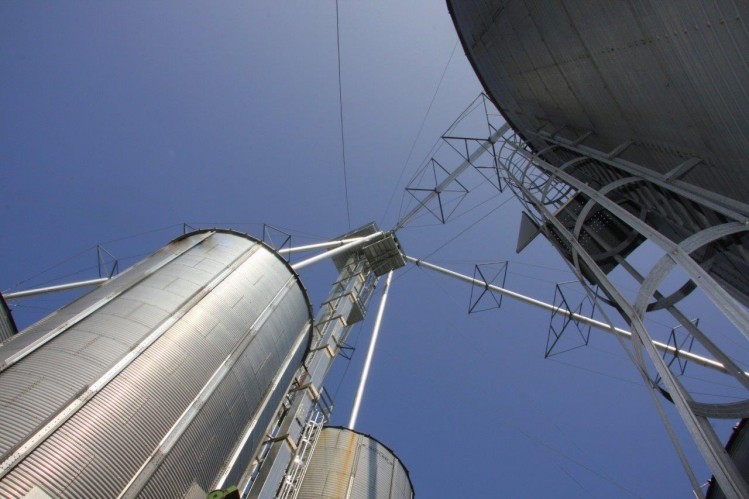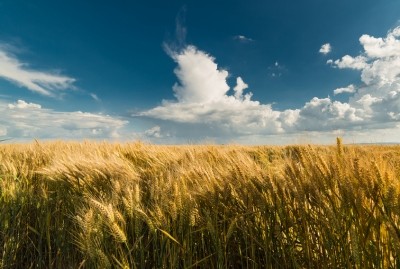US producers may turn to wheat feed for price, protein

In a Knowledge Exchange division report by Tanner Ehmke and Trevor Amen, economists with CoBank, the pair outline support for seeing additional amounts of feed wheat enter the US feed market.
The move toward increased use of feed wheat, they noted, may help clear space in grain elevators facing a large feed grain harvest, in some wheat growing regions.
“Wheat is destined to become a staple in livestock’s feed rations for the next year or two, if not longer,” they said. “Wheat prices will remain competitive with other feed grains for the foreseeable future, barring of course a major weather event.”
Benefits from feeding wheat, include that the ingredient can carry a higher protein content than corn, its current price and that putting more wheat on the feed market opens storage space for the current harvest, they said. However, there also are some factors that may make farmers maintain stored amounts.
“Cash wheat is priced at a discount to corn, whereas it usually trades at a premium,” said the analysts. “Grain handlers are anticipating a flood of orders for feed wheat, which should enable them to move excess wheat inventories out of storage ahead of what is expected to be a record-large fall harvest.”
Wheat: the attraction of cheap
The current outlook from the US Department of Agriculture (USDA) expects wheat feeding in the US to increase.
“With cash wheat prices on the plains continually finding new lows – some local areas are posting the lowest prices in decades – USDA’s feed wheat estimate will likely see more upward revisions given wheat’s high stocks-use ratio,” they said.
In some parts of the US, like the cattle-feeding portion of southwest Kansas that also grows hard red wheat, cash wheat has traded at more than $0.40 below corn, they said.
“The prospect of corn’s stouter export program resulting from a shortfall in South American production, meanwhile, further raises the possibility of wheat-corn spreads in the eastern US turning negative again in the weeks and months ahead,” said the analysts. Although, some old crop corn may see additional discount as new supplies are available, they added.
But there may be reasons some farmers look to maintain amounts of wheat if they also face a large, if not record, fall harvest, they said.
“Many elevators in the plains states also lack sufficient storage capacity and have resorted to storing wheat piles on the ground,” they said. “Rising storage rates at commercial elevators could incentivize farmer selling.”
Challenges, considerations in wheat feeding
However, price is not the only aspect of an ingredient to be considered when formulating a feed, said Ehmke and Amen. Producers also have to examine feed quality, availability, processing method and the potential for reduced corn prices this fall.
Additionally, abundant wheat yield may mean the protein content is lower and could require a protein supplement like soybean meal or dried distillers’ grains, they said. “Going forward, those livestock producers with experience and know how in feeding wheat and the facilities to support multi-grain rations are well positioned to take advantage of emerging pricing opportunities,” they added.
Wheat offers a lower amount of energy than corn, they said, but may have a higher protein value. Hard red wheat has about a 12% protein content and soft red wheat has a 10% protein content and both are selling at or below prices for corn.
Wheat storage
However, there may be some produces who maintain wheat stores, said Ehmke and Amen. “Prices have also fallen low enough to trigger the government’s Commodity Loan Rate (CLR) where farmers can retain ownership of their crop and receive a nine-month loan using their wheat as collateral, allowing farmers to hold on to their wheat until prices improve,” they said.
Farmers also may see some incentive from the futures market, they said. “In the Midwest where old-crop SRW inventories are poorer quality because of vomitoxin, sprout-damage and foreign material, grain handlers will also be motivated to carry new-crop wheat for blending out old-crop wheat,” they added.
“Regardless of the individual decisions that each livestock operator must make based on local markets, they all stand to reap huge rewards with an abundant feed supply that is likely to grow into 2016-17 with a potentially record fall harvest,” said the analysts. “Grain handlers that still hold substantial wheat inventories, meanwhile, are being offered an opportunity to create much needed space before harvest by sending more wheat into the feed mix.”










